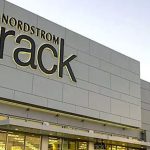With broad-based robust growth across categories and in its direct-to-consumer channels, Under Armour reported fourth-quarter earnings jumped 54.0 percent on a 25.5 percent revenue gain.
UA also set bullish targets for 2013, calling for revenues to climb 20 percent to 21 percent to hit a range between $2.2 billion to $2.22 billion. Operating income is projected to come in at a slightly-higher pace, growing 22 percent to 23 percent, to $255 million to $257 million.
On a conference call with analysts, Kevin Plank, CEO and president, said the improvement will be driven by an even more aggressive diversification of its business across categories and channels in 2013, led by the promised arrival of more game-changing innovation and fresh approaches to in-store selling.
We will redefine the pinnacle of how we present our brand at retail, said Plank. We will elevate the presentation of our brand and our wholesale distribution and most importantly, we will speak with a louder brand voice than at any point in our history.
Earnings in the fourth quarter reached $50.1 million, or 47 cents a share, exceeding Wall Streets consensus estimate of 46 cents a share. Revenues reached $505.9 million.
Apparel sales in the quarter grew 25.1 percent to $404.5 million, representing the 13th straight quarter of at least 20 percent growth for its largest product category. Its Fleece and Storm platforms drove Apparels growth.
We were able to significantly expand the Storm platform beyond just the Charged cotton line last year to now encompass the broader Armour Fleece line, said Brad Dickerson, CFO, on the call. That invites this product to the consumer as consumers look for more versatility from our store base.
Women’s was aided by new product categories like Studio and Armour Bra. Youth saw the strongest gains in Apparel, benefiting from additional shelf space at both existing and new distribution and a broadening into areas like graphics, which more than tripled during the quarter.
Footwear sales grew 42.7 percent to $44.7 million. New running products led by the UA Spine platform continued to be the largest contributor to category growth. Strong initial selling was also seen in its 2013 line of baseball cleats. Accessories advanced 15.8 percent to $42.6 million.
By region, North America sales jumped 25.2 percent to $472.2 million. International revenues grew 29.5 percent to $33.6 million, highlighted by solid growth in Latin America, Asia and its Europe regions.
UAs direct-to-consumer revenues increased 29 percent for the quarter, representing approximately 39 percent of net revenues compared to approximately 38 percent in the prior-year period. Five Factory House stores opened during the quarter, increasing its domestic store base to 101, up 26 percent from 80 locations at the end of 2011. E-commerce grew in line with UAs overall top-line growth in the period.
Gross margins in the quarter contracted to 50.3 percent compared with 51.6 percent in the prior year’s quarter, in line with expectations. Of the decline, 80 basis points reflected a higher rate of excess inventory at its Factory House stores as well as a higher mix of Footwear, which carries lower margins than other product categories. Increased airfreight, reflecting its previously outlined supply chain challenges, impacted margins by 50 basis points. Higher footwear input costs reduced margins by 35 points.
SG&A expenses were reduced to 34.2 percent of sales from 37.9 percent in the prior year’s period due partly to a shift in marketing budget to the second and third quarter in 2013 to align with planned launches. Also benefiting operating costs was expense leverage on selling, product innovation and supply chain, and corporate services expenses.
Inventory at quarter end decreased 2 percent year-over-year, reflecting the ongoing success of inventory management initiatives.
On the call with analysts, Plank noted that 19 months ago, management forecast sales would double to $2.13 billion by 2013, with the new targets exceeding those goals despite continuing challenges in the marketplace.
Plank said the upbeat guidance shows were becoming much better company operationally, and the company has been able to reach out to a new consumer through successes such as Charged Cotton and Storm Fleece.
Developing these large-scale apparel platforms has not only enabled us to take a bigger share of closet with our core Men’s consumer, but it has helped us grow an even faster rate in Women’s and Youth. The results of this diversification are quite clear, Plank said.
Plank said the diversification has led to compression apparel representing only 14 percent of its business in 2012, down from 64 percent at the time of its IPO year of 2005. Further diversification is promised by new hires across its apparel, supply chain, women’s and international teams. In footwear, COO Kip Fulks, as reported, is assuming responsibility of the category following the resignation, effective Feb. 22, of Gene McCarthy, as SVP, footwear. Plank noted that Fulks primary focus in footwear will be to to lead and continue to bring new talent into the team. He noted that UA only has meaningful market share in cleats but the overall size of the run and basketball categories indicates that the brands overall potential in footwear extends well beyond the near quarter billion dollars in revenue we saw in 2012.
Diversification will also be helped by its expansion of Direct-to-Consumer, which now represents 29 percent of sales, up from 21 percent in 2010. At the store level, a new 8,000-square foot specialty concept will open in Baltimore in mid-February with the footwear presentation being the primary focus and womens receiving as much of a presence as mens. Said Plank, We believe that when our consumer sees the cohesive story of our product merchandise the full power of our brand, we will be positioned to take our growth in both footwear and Women’s to the next level.
At Dicks SG, 15 new All-American and 20 blue-chip shopping shops, including a new larger prototype in Cranberry, PA, will open this year. Women’s and youths assortment are being significantly expanded across key accounts like Academy and Hibbett Sports. Within its expanding department store distribution, UA is gaining new doors and growing existing floor space at Macy’s, Dillards and Belk with a focus on Women’s, Youth and Underwear.
On the innovation side, UAs first performance monitoring system, Armour 39, will be launched in March. But UAs overall innovation stories overall will be called out more this year through several planned campaigns called Holidays. The first will come by the end of February. Said Plank, We will create several brand holidays throughout this year, creating a call to action for our consumers to stand up and get the latest innovation from Under Armour. Youll be hearing the Under Armour brand voice in 2013, louder and better than ever.
Regarding guidance, the 20 percent to 21 percent top-line growth for 2012 will again largely come from strong growth across Men’s, Women’s and Youth Apparel areas. Footwear is expected to increase slightly above its overall growth rate. Direct-to-Consumer is likewise expected to grow modestly higher than its overall growth rate with 10 factory and two full-price doors set to open, a larger footprint within its existing Factory House Fleece receives a greater focus, and investments are made to drive e-commerce traffic.
Stronger growth margin expansion is predicted for the first half of the year, primarily driven by favorable year-over-year product cost expected during the first half. Flat gross margins are expected in the first quarter, followed by 100-basis-point expansion during the second. Relative to the second quarter, first-quarter margin is expected to be limited by expected higher year-over-year airfreight costs as it works through its supply chain challenges, strong expected growth in its Latin America distributor-run business that carries lower margins, and a higher mix of excess and made-for products in its outlet channel. Back-half margins are expected to benefit from the anniversarying of excess disposition strategy at its outlet stores and incremental airfreight but impacted by higher apparel costs due to changes to its sourcing base, particularly in fleece. Overall, modest gross margin expansion is expected for the year, primarily driven by the first half improvement.
SG&A is expected to remain flat year-over-year as incremental expenses, tied to the expansion of its California distribution center, the opening of its Harbor East specialty door in Baltimore and higher year-over-year incentive compensation expense in the first quarter are largely offset by expense leverage in the other three quarters.















